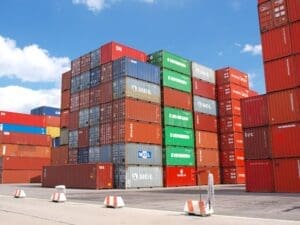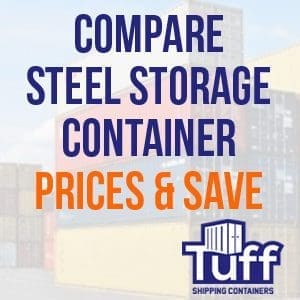
How Much Should You Pay for a Used Shipping Container?
Welcome to the world of shipping containers! At Tuff Shipping Containers, we understand that buying a used shipping container can be a daunting task, especially when it comes to price. Whether you’re looking to create a dream home, a mobile office, or just need extra storage space, understanding the cost factors is crucial. In this post, we’ll guide you through everything you need to know about pricing for used shipping containers.
Understanding the Market
First, it’s important to understand that the shipping container market is influenced by several factors, including supply and demand, container condition, size, and location. Prices can vary significantly based on these elements.
Supply and Demand
Much like any other market, the availability of shipping containers can greatly affect their price. A surplus in certain areas might mean lower prices, while scarcity can drive prices up.
Condition of the Container
The condition of a shipping container plays a vital role in its price. Containers are graded based on their physical state and history. ‘As-is’ containers might be the cheapest, but they may require repairs. On the other hand, ‘cargo-worthy’ containers are slightly more expensive but are guaranteed to be wind and water-tight.
Size Matters
Typically, shipping containers come in two main sizes – 20-foot and 40-foot. The larger the container, the higher the price. However, the price per square foot might be lower for a 40-foot container, offering more value for larger projects.
Location and Transportation Costs
The proximity of the container to your location can significantly impact the overall cost. Transportation and delivery fees can add up, especially for distant locations. It’s often more economical to find a container closer to you, even if the initial price is slightly higher.
Price Ranges
While it’s challenging to pinpoint exact prices due to the fluctuating market, here’s a general guideline:
- Standard 20-foot Containers: Expect to pay anywhere between $1,500 to $3,000 for a decent condition 20-foot container.
- Standard 40-foot Containers: These can range from $2,500 to $4,500, depending on condition and location.
Remember, these are approximate figures, and prices can vary based on the factors mentioned above.
Additional Costs
Don’t forget to factor in additional costs such as delivery, potential modifications, and maintenance. These can all add to the initial investment.
Making the Right Choice
When selecting a used shipping container, consider what you’ll be using it for. A container for simple storage might not need to be in top-notch condition, whereas a container for a home or office should be carefully inspected for structural integrity and safety.
Purchasing a used shipping container is a significant investment, but it can be incredibly rewarding. At Tuff Shipping Containers, we’re here to help you make an informed decision that fits your needs and budget. Remember, the cheapest option isn’t always the best in the long run. Quality, condition, and location are key factors to consider.


Pros and Cons of Used vs. New Shipping Containers
When it comes to choosing between a used or new shipping container, each option has its own set of advantages and disadvantages. Here’s a breakdown to help you decide which is best for your needs.
Used Shipping Containers
Pros:
- Cost-Effective: Used containers are generally more affordable than new ones. This makes them an attractive option for budget-conscious buyers.
- Eco-Friendly: Buying used is a form of recycling, which is better for the environment. It reduces the demand for new materials and minimizes waste.
- Availability: Used containers are readily available and often come in a variety of sizes and types, providing more flexibility in choice.
Cons:
- Wear and Tear: Used containers may have damages such as dents, rust, or wear, which could require additional maintenance or repairs.
- Limited Lifespan: Since they’ve already been used, these containers might not last as long as new ones, depending on their condition and how they were used previously.
- Unknown History: It’s often difficult to track the full history of a used container, including what it transported and the environments it was exposed to.
New Shipping Containers
Pros:
- Excellent Condition: New containers are in pristine condition with potentially longer lifespans. They are ideal for purposes that require a clean and neat appearance, like a home or public space.
- Customization: When buying new, you may have options for customization right from the manufacturer, such as choosing specific dimensions or features.
- Minimal Maintenance: Since they haven’t been used, new containers typically require less maintenance initially.
Cons:
- Higher Cost: New shipping containers are more expensive. This higher upfront cost can be a significant factor for some buyers.
- Limited Availability: There may be fewer options available in terms of size and type, as new containers are often standardized.
- Environmental Impact: Manufacturing new containers consumes more resources and energy, contributing more to carbon footprint compared to reusing an existing one.


Making the Right Choice
Deciding between a new or used shipping container depends on your specific needs, budget, and the intended use. Used containers are a great option if you are looking for a more affordable and environmentally friendly choice and are prepared to deal with potential repairs or refurbishments. On the other hand, if you require a container in mint condition, with a longer lifespan and less immediate maintenance, a new container might be the right choice.
Whether you choose a new or used shipping container, Tuff Shipping Containers is here to guide you through the process. Our team can help assess your needs and find the best option for you, ensuring that you make a decision that balances cost, condition, and sustainability.

Leave a Reply